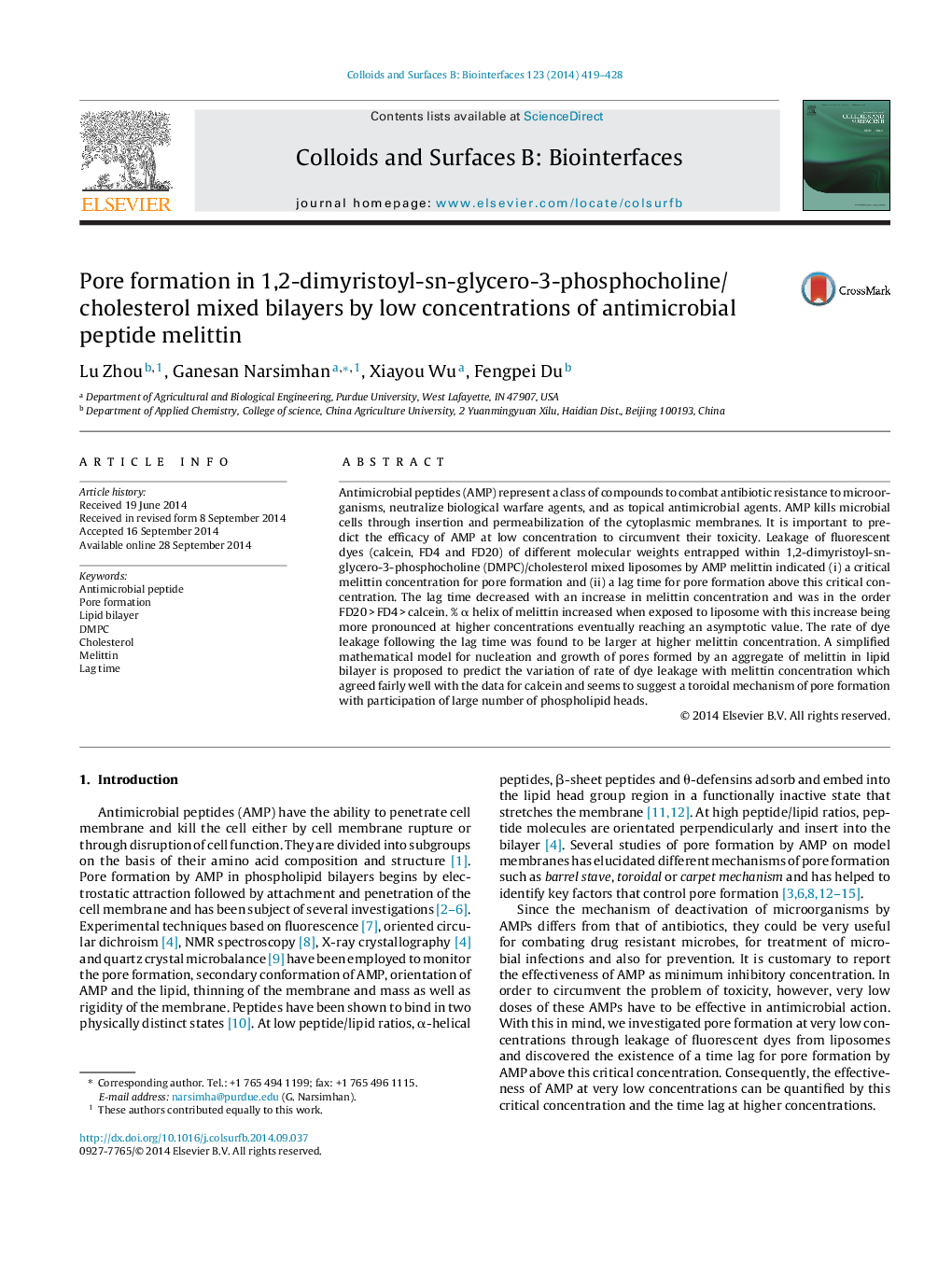| Article ID | Journal | Published Year | Pages | File Type |
|---|---|---|---|---|
| 599510 | Colloids and Surfaces B: Biointerfaces | 2014 | 10 Pages |
•Dye leakage from DMPC/cholesterol mixed liposomes exposed to melittin was measured.•A critical melittin concentration for pore formation by melittin was observed.•A lag time for pore formation above this critical melittin concentration was observed.•Lag time decreased at higher melittin concentration and lower dye molecular weight.•Model for nucleation and growth of pores suggests a toroidal mechanism.
Antimicrobial peptides (AMP) represent a class of compounds to combat antibiotic resistance to microorganisms, neutralize biological warfare agents, and as topical antimicrobial agents. AMP kills microbial cells through insertion and permeabilization of the cytoplasmic membranes. It is important to predict the efficacy of AMP at low concentration to circumvent their toxicity. Leakage of fluorescent dyes (calcein, FD4 and FD20) of different molecular weights entrapped within 1,2-dimyristoyl-sn-glycero-3-phosphocholine (DMPC)/cholesterol mixed liposomes by AMP melittin indicated (i) a critical melittin concentration for pore formation and (ii) a lag time for pore formation above this critical concentration. The lag time decreased with an increase in melittin concentration and was in the order FD20 > FD4 > calcein. % α helix of melittin increased when exposed to liposome with this increase being more pronounced at higher concentrations eventually reaching an asymptotic value. The rate of dye leakage following the lag time was found to be larger at higher melittin concentration. A simplified mathematical model for nucleation and growth of pores formed by an aggregate of melittin in lipid bilayer is proposed to predict the variation of rate of dye leakage with melittin concentration which agreed fairly well with the data for calcein and seems to suggest a toroidal mechanism of pore formation with participation of large number of phospholipid heads.
Graphical abstractFigure optionsDownload full-size imageDownload as PowerPoint slide
